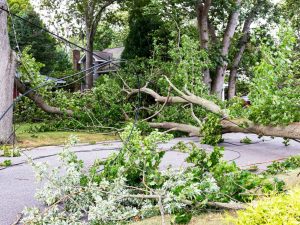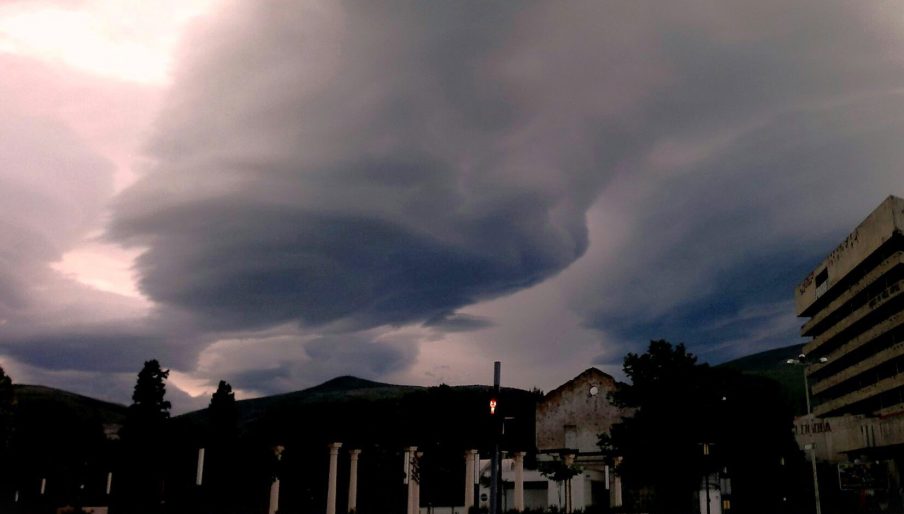In late July, tornado touchdowns in southern and eastern Ontario and Quebec left power outages and massive cleanup for communities, businesses, and residents caught in the stormy path of destruction. Canada is the world’s second most tornado-hit nation after the United States, with 80 to 100 such incidents reported annually from March through October. Severe storms can produce intense winds, which under the right circumstances, can lead to tornadoes. Property managers should not underestimate the power of combined wind and water threats when thunderstorm warnings are issued.
Remember the Derecho storm that overwhelmed large parts of Southern Ontario in May? Well, it did so with very little warning, resulting in 10 deaths, extensive damage, and the destruction of several buildings—including apartments. Craig Smith and Jim Mandeville of First Onsite Property Restoration say this is happening with greater frequency and severity each summer.
“Last August, Barrie, Ontario, was hit with a tornado that left a five-kilometre swath of destruction resulting in $75 million in damage,” Smith said. “With winds of up to 210 km per hour, many people and families were affected, including 150 homes.”
Although data shows there’s been only a slight increase in global weather, water, and climate disasters between 2011 and 2021 compared the previous decade, Canada is also experiencing more frequent and severe wildfires, windstorms, hailstorms, and rainstorms—all of which can cause damage to buildings. In fact, the insurance Bureau of Canada estimates that Severe Weather in 2021 caused $2.1 billion in insured damage from flooding, wildfires and extreme weather events, resulting in a higher number of claims and a significant spike in insurance rates.
To help landlords and property owners better prepare for tornadoes and other weather-related emergencies, Smith and Mandeville offer the following tips and advice:
What to know structurally:
While there’s little that can be done to protect a building from a direct hit of a tornado, certain building types can withstand high winds better than others. For instance, concrete and steel buildings by nature are more resilient to severe wind impacts—but this does not mean they are impervious. Often these structures are clad in glass curtain walls, which can shatter, allowing water to enter the structure while also creating the hazard of falling glass.
Conventional wood frame structures are not generally as strong as concrete ones; therefore, direct impacts from tornadoes or extreme straight-line winds can cause substantial structural damage, including the displacement of roofs, and in rare circumstances, total structural collapse. Modern construction practices are helping to minimize this risk. Requirements for things like hurricane straps on trusses and vertical reinforcements installed during the framing stage can substantially increase the survivability of these structures.
Unfortunately for legacy buildings, these modifications are not always possible or practical due to the extensive redesign that would be required. Still, owners and managers should look to upgrade their building envelope (roofing, cladding, windows, and doors) to make them more resilient to wind damage. During new construction, especially in areas that are prone to these wind events, additional structural reinforcement of these type of buildings, even in excess of local codes, is highly recommended.
How to prepare:
Apartment building owners and managers should be proactive and make emergency planning and response a priority. Thunderstorms containing high winds have the potential to develop into tornadoes—and this can happen very quickly and with little warning. With any disaster, awareness of potential hazards and preparedness is key to mitigating and managing damage and maintaining the safety of residents. Having a comprehensive plan in place can help ensure facility managers get back on their feet as quickly as possible after an event takes place.
Specific steps to take before a severe weather event:
- Secure loose outdoor objects. Any unsecured item, such as garbage bins, potted plants, bikes, and toys, can become a deadly projectile in high winds. Move these indoors, or tie them down to avoid injury to people, or damage to the property.
- Install surge protectors. Windstorms and tornadoes often down trees, which can cause power outages followed by power surges when electricity is restored. Surge protectors help protect electronic devices from voltage spikes caused by power surges.
- Back up electronic devices. This step is critical for building management and residents. Critical data should be stored off-site in case physical computers or devices are damaged or inaccessible due to a tornado.
- Ensure there is adequate insurance coverage. Facility managers should check their policies to make sure they’re covered for damage caused by wind or rain. This generally includes damage caused by flying debris or falling branches or trees, or damage when water enters through openings caused by high winds.
- Test emergency plans. Testing emergency response plans can often reveal areas that need improvement. Annual testing can ensure that everyone knows what to do should the need arise.
- Establish a partnership with a full-service property restoration company. Having a program in place and knowing who to call can provide facility managers with peace of mind. It’s important to have a team you can count on if damage does occur to your property.
 What to do in the aftermath:
What to do in the aftermath:
- Stay informed. When a severe thunderstorm, windstorm or tornado hits, updates will come in regularly, as will notifications of follow-up storms in the area.
- Ensure the health and safety of occupants. Remain in contact with your residents using proper communication and protocols before, during, and after a severe storm.
- Inspect buildings once the storm has subsided. Tornadoes’ strong winds have the potential to hurl debris hundreds of metres, so even if you don’t think your building was affected, it’s best to inspect the exterior thoroughly—otherwise, the next time it rains, you may have some unexpected water damage to contend with.
Craig Smith is Director, Commercial Business Development and Jim Mandeville is Senior Vice President – Large Loss with FIRST ONSITE | Residential & Commercial Property Restoration Services.







